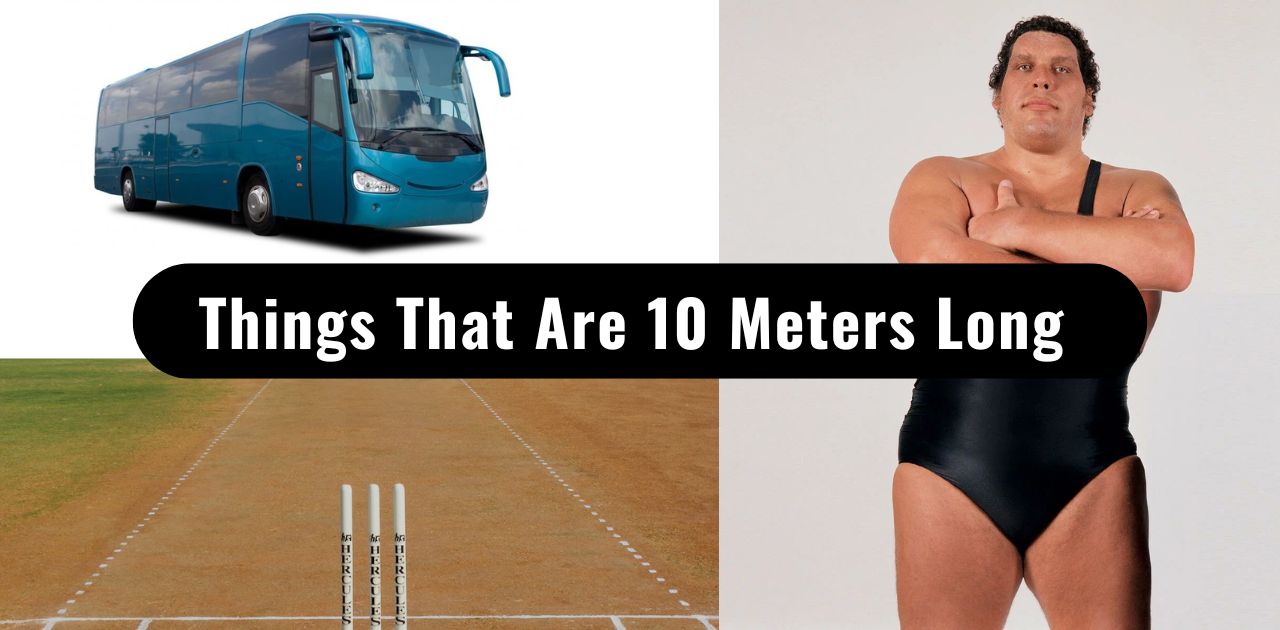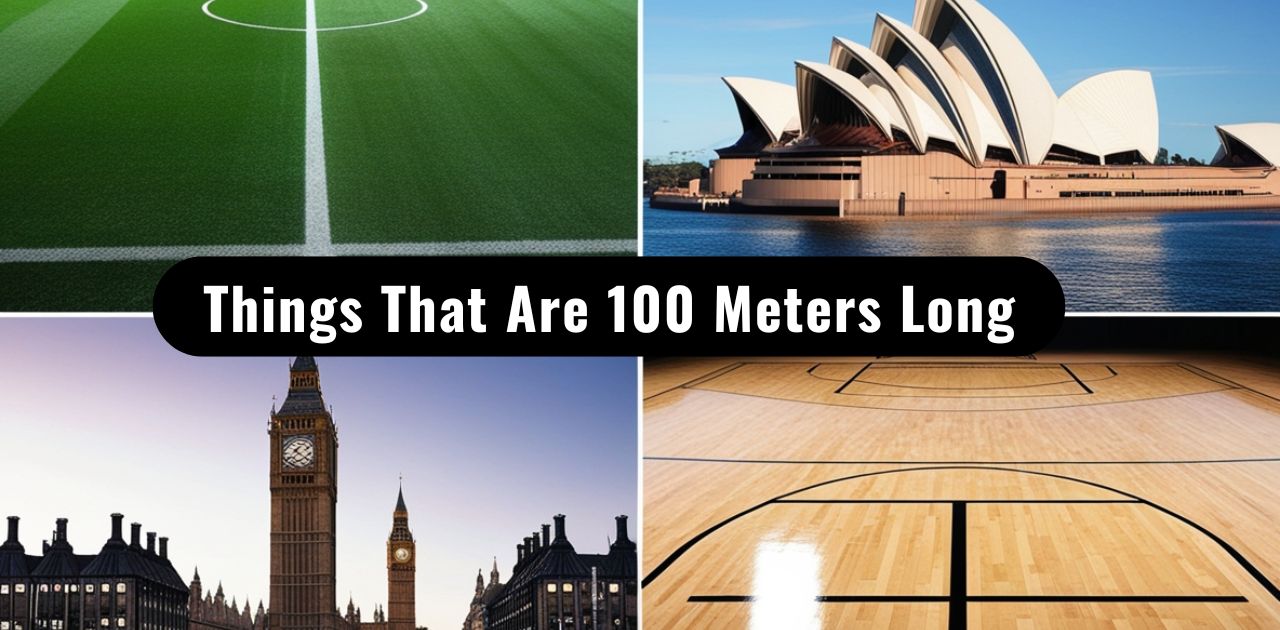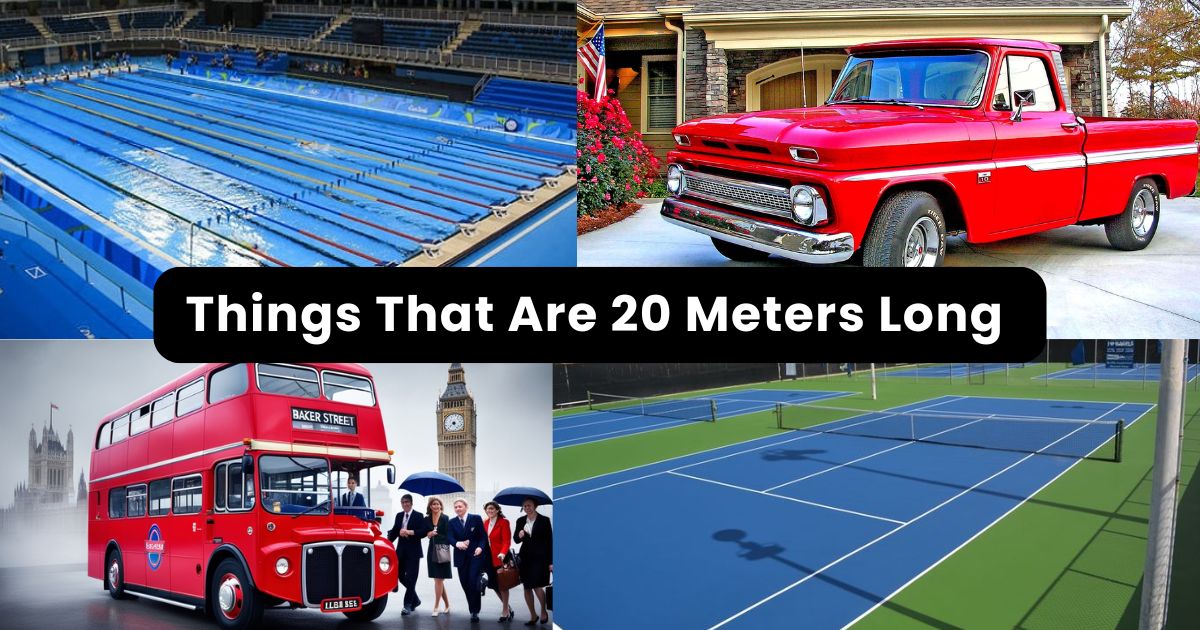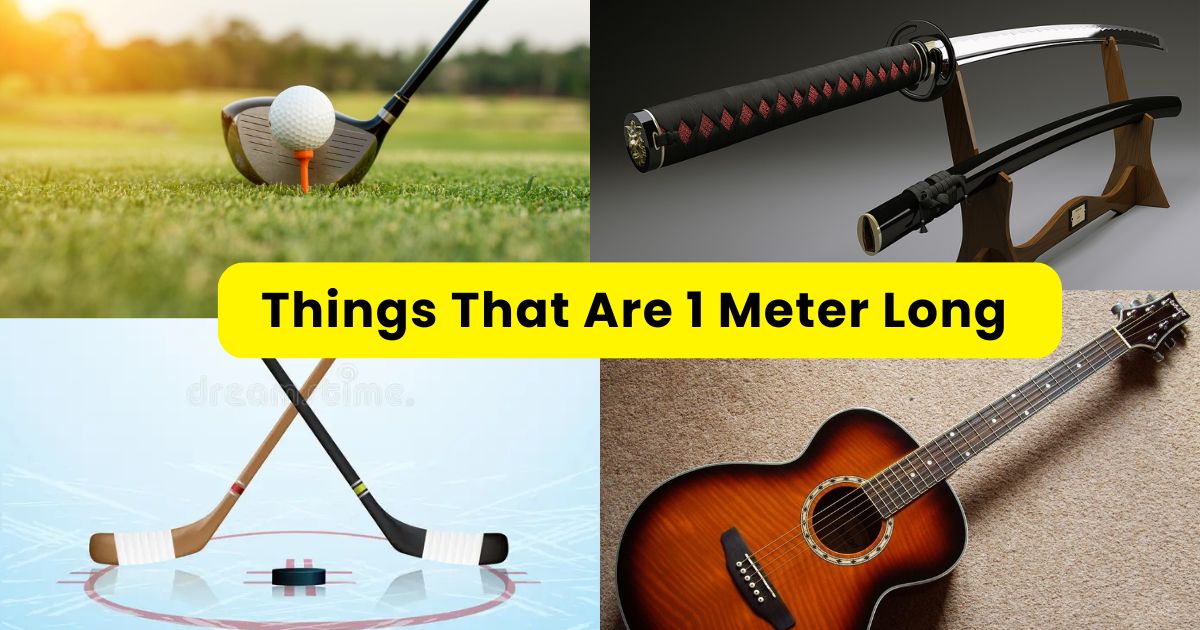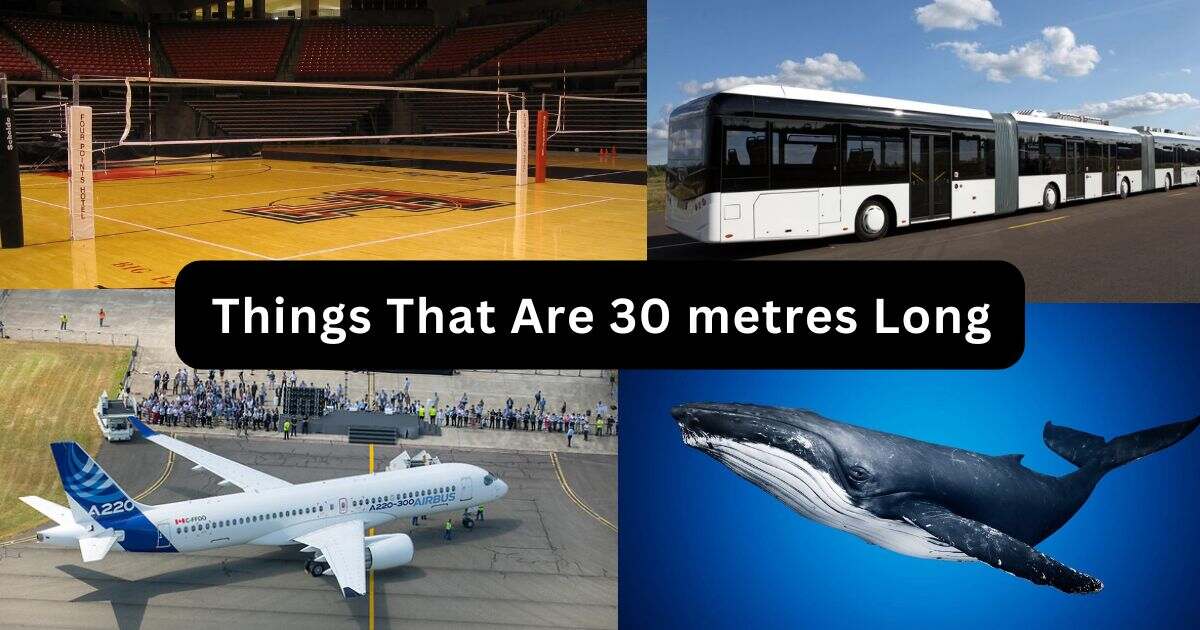Understanding spatial measurements can transform how we perceive the world around us. Ten meters a distance equivalent to 32.8 feet might sound abstract, but when compared to familiar objects and landmarks, it becomes a vivid and tangible concept.
This comprehensive guide will explore fascinating comparisons that bring the 10-meter measurement to life, helping readers develop an intuitive sense of scale and distance in everyday contexts.
How Long is 10 Meters?
To truly grasp the length of 10 meters, imagine standing beside a three-story building or stretching across half a standard swimming pool.
This measurement represents more than a mere numerical value it’s a dynamic spatial reference that appears in numerous environments, from sports arenas to urban landscapes.
The human perception of distance is deeply rooted in personal experience. When we relate measurements to familiar objects, abstract numbers transform into meaningful information. A 10-meter distance is substantial yet manageable approximately the width of a two-lane road or slightly shorter than a school bus.
How Far is 10 Meters?
Ten meters might not seem extremely long, but it’s significant enough to make a meaningful difference in various scenarios. Consider a sports arena where a basketball player stands at the free-throw line, facing a hoop positioned exactly 10 meters away. This distance becomes a critical spatial measurement that impacts performance and strategy.
In outdoor activities, 10 meters represents an ideal length for quick sprint drills or speed tests. Athletes and coaches frequently use this measurement for training exercises, understanding that every meter matters when developing speed and agility.
Urban navigators, parkour enthusiasts, and recreational athletes all recognize the potential dynamism within this seemingly modest distance.
10 Meters Compared to the Human
Human scale provides an excellent framework for understanding measurements. The average adult human stands around 1.7 meters tall. To conceptualize 10 meters, imagine nearly six adults stacked vertically a striking visual that immediately conveys the measurement’s substantial nature.
This human-centric approach helps transform abstract distances into relatable experiences. Picture walking alongside a 10-meter tall tree or observing the length of a bus with comparable dimensions. By anchoring measurements in human experience, complex spatial concepts become instantly comprehensible.
Things That Are 10 Meters Long or Big
- 10 Adult Steps
- Half a Cricket Pitch
- A Telephone Pole
- 2x Great White Shark
- As Tall as Five Refrigerators
- 1/4 the Length of Ha’Penny Bridge
- Three-story Building
- A Bus
- As Tall as Four and a Half Andrés the Giant
- Length of Four Surf Boards
- Retractable Tape measure
10 Adult Steps

Measuring distances without traditional tools becomes an intuitive skill when you understand human stride patterns. The average adult typically covers approximately 0.8 to 1 meter with each step. This means traversing 10 meters requires just 8 to 10 deliberate steps a practical method for estimating distances in various environments.
For athletes and fitness enthusiasts, step counting transforms into a sophisticated tracking technique. Whether you’re setting walking goals, planning garden layouts, or navigating park paths, understanding your personal stride becomes a valuable skill. Coaches often utilize this technique for quick field measurements, helping athletes develop spatial awareness and precise movement strategies.
Half a Cricket Pitch

Cricket enthusiasts will recognize the significance of 10 meters as precisely half of a standard cricket pitch. A full pitch measures about 22 yards, or 20.12 meters, making our 10-meter measurement a critical zone of athletic performance. This represents the dynamic space where bowlers execute precise throws and batsmen make strategic positioning decisions.
The pitch becomes a microcosm of skill and strategy. Every movement within this 10-meter span can determine the game’s outcome. Coaches analyze these measurements meticulously, understanding that spatial relationships are as crucial as individual player capabilities.
A Telephone Pole

Telephone poles, ubiquitous in both urban and rural landscapes, offer an excellent real-world reference for 10-meter heights. Typically standing 30 to 36 feet tall, these structures serve more than just electrical and communication infrastructure they become natural measuring markers that help contextualize spatial dimensions.
These vertical landmarks dot our landscapes, silently providing scale and perspective. When you next pass a telephone pole, consider how its height represents a tangible 10-meter measurement, bridging the gap between abstract numbers and physical reality.
Read Also >> Everyday Items That Are 5 Meters Long or Big
2x Great White Shark

Marine enthusiasts will appreciate a visualization involving two great white sharks. These apex predators typically measure around 17 feet or 5 meters in length. When positioned end-to-end, two average great white sharks collectively stretch to approximately 10 meters a stunning representation of oceanic scale.
This comparison not only provides a vivid mental image but also highlights the impressive dimensions of marine predators. It transforms a mathematical measurement into a breathtaking natural perspective, connecting human understanding with the magnificent world of sea creatures.
As Tall as Five Refrigerators

Visualizing measurement becomes remarkably simple when using familiar household appliances. The average refrigerator stands approximately 5 to 6 feet tall. Imagine stacking five of these substantial kitchen fixtures vertically you’d create a structure that closely approximates 10 meters in height.
This visualization technique transforms an abstract measurement into a tangible, relatable concept. When standing next to your refrigerator, try mentally multiplying its height five times. The exercise provides an intuitive understanding of scale, making complex measurements accessible to everyone from children to professionals engaged in spatial planning.
1/4 the Length of Ha’Penny Bridge

Dublin’s iconic Ha’Penny Bridge offers a unique urban measurement reference. Spanning 42.90 meters in total length, one-quarter of this distance approximately 10.725 meters provides an fascinating perspective on spatial navigation. Daily, countless pedestrians and tourists traverse this portion of the bridge, unknowingly experiencing a precise 10-meter measurement.
Urban landscapes become living measurement tools, transforming abstract distances into contextual experiences. This bridge serves not just as a transportation route, but as a remarkable landmark for understanding spatial dimensions.
Three-story Building

Architectural structures provide excellent measurement references. A typical three-story building reaches approximately 10 meters in height, with each story averaging around 10 feet. This comparison brings measurement into our everyday visual experience, helping individuals intuitively understand spatial scales.
Observing such buildings offers a practical perspective on height and distance. Whether walking through residential neighborhoods or urban centers, three-story structures become natural measurement markers that help conceptualize 10-meter distances.
A Bus

Urban transportation provides another excellent 10-meter measurement reference. Standard city buses typically range from 35 to 40 feet in length, closely matching the 10-meter distance. When waiting at a bus stop or watching these vehicles navigate city streets, you’re experiencing a real-world representation of this specific measurement.
Buses transform abstract measurements into tangible urban experiences. They become moving landmarks that help city dwellers intuitively understand spatial relationships and distances.
As Tall as Four and a Half Andrés the Giant

Professional wrestling legend André the Giant stood at an impressive 2.20 meters (approximately 7 feet 4 inches). Visualizing four and a half of these towering figures stacked vertically creates a dramatic representation of 10 meters.
This comparison not only provides a memorable measurement perspective but also celebrates the extraordinary scale of human physical diversity. André becomes more than a wrestling icon he transforms into a living measurement tool that helps us understand spatial dimensions.
I’ll continue the article, maintaining the comprehensive and professional style while adhering to the guidelines.
Length of Four Surf Boards

Surfing enthusiasts offer a unique perspective on 10-meter measurements. A typical surfboard ranges between 2.4 to 2.7 meters in length. When four surfboards are carefully aligned end-to-end, they collectively represent the 10-meter distance a visualization that brings spatal understanding to life.
This comparison transcends mere measurement. It captures the essence of recreational activities, connecting mathematical precision with the dynamic world of ocean sports. Surfers intuitively understand how environmental specifics and board dimensions interact, making this 10-meter representation both practical and evocative.
Retractable Tape Measure

For professionals and do-it-yourself enthusiasts, the retractable tape measure becomes the ultimate precision tool for understanding 10-meter measurements. These versatile instruments bridge the gap between abstract distances and tangible space, proving invaluable in carpentry, construction, and home improvement projects.
A fully extended 10-meter tape measure provides an exact, unambiguous reference point. Whether planning room layouts, designing garden spaces, or executing complex construction projects, this tool transforms measurement from a theoretical concept into a practical instrument of spatial understanding.
Read Also >> Things That Are 500 Meters Long or Big
Conclusion
Understanding measurements goes far beyond numerical abstractions. By connecting 10 meters to familiar objects from telephone poles to surfboards, from buses to athletic spaces we develop a more intuitive perception of spatial relationships.
Each comparison reveals something profound: measurements are not just numbers, but dynamic representations of our physical world. They help us navigate, plan, and comprehend the environments we inhabit. Whether you’re an athlete tracking performance, a professional measuring project spaces, or simply curious about spatial dimensions, these 10-meter visualizations provide a comprehensive toolkit for understanding scale.
The next time someone mentions 10 meters, you’ll have a rich mental library of references. From the length of great white sharks to the height of stacked refrigerators, these comparisons transform abstract measurements into tangible, memorable experiences.
NOTE: Measurement is more than mathematics it’s a lens through which we understand our three-dimensional world, connecting numbers to the physical experiences that shape our daily lives.
FAQ’s
How far away is 10 meters in feet?
10 meters is exactly 32.8 feet, equivalent to the length of a typical city bus.
How long does 10 meters look like?
10 meters visualized as four surfboards, half a cricket pitch, or stacked refrigerators provides a tangible spatial perspective.
How long will it take to walk 10 meters?
An average adult takes 8-10 steps to cover 10 meters, approximately 10-15 seconds of walking.
How long is 10 meters in a room?
In a standard room, 10 meters is roughly the diagonal distance across a medium-sized living space.
How many steps for 10 meters?
Typically 8-10 adult steps, depending on individual stride length and walking pace.
How far is 10 meters in a swimming pool?
10 meters represents slightly less than half the length of a standard Olympic swimming pool.
What objects are 10 meters long?
Objects include a city bus, four surfboards, half a cricket pitch, or two great white sharks positioned end-to-end.
How long is 10 meters in cm?
10 meters equals 1,000 centimeters, a precise metric conversion.
How long is 10 meters visually?
Visually, 10 meters can be compared to a three-story building, five stacked refrigerators, or four and a half André the Giant heights.

